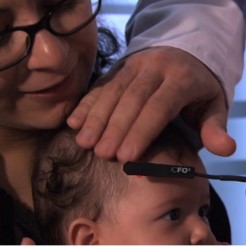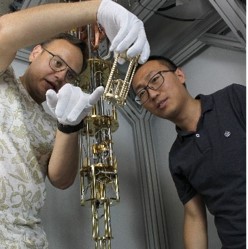ICFO decide game
Group 4 – Participant 1
Story cards
Read all the cards from this category, choose the one that looks more interesting to you and explain it to the rest of the group.
Jun jiang
Story Card 6
I wore glasses since I was a kid and I always wanted to be like my friends who could play sports and go to the pool without having sight problems. Two years ago I was able to have eye surgery to reduce my myopia and I can finally see the world directly and not through my glasses! And all thanks to the photons of an ultra-precise laser that allowed the surgeon to make incisions in my eyes with minimal risk.
health
pere puig
Story Card 7
I like to feel safe when driving, so I'm happy with any safety innovation. For example, I'm thrilled to have infrared light sensors in my new car that help me park and alert me when a car gets too close, avoiding scares and even some accidents!
In a few years, I hope to be able to buy a self-driving car that drives me around: finally I’ll be more calm and relaxed when I’m stuck in traffic, because the car will do all the work. Much of the obstacle detection work will be done by infrared photon pulses, maybe even detected by graphene cameras!
information and cybersecurity
zahra zadeh
Story Card 18
Living in a mountain village with few shops, I usually buy everything I need online. However, there are many people in the village, including my grandmother, who would rather spend more than one hour in the car to the nearest city than leave their data on the internet, because they are afraid of cyberattacks.
Although this is a serious danger, I’m not worried, because I read that there are also many people who are studying new ways to improve the security of our communications, and it seems that the most promising techniques have to do with the exotic properties of quantum physics!
information and cybersecurity
info cards
Read all cards from this category, choose the two that look more interesting and explain them to the rest of the group.
non-invasive diagnosis and monitoring
Info Card 6
Did you know that photons can penetrate a few centimeters inside our body? In ICFO and Hemophotonics (an ICFO spin-off born in 2013) we use this property to get real-time information about what's going on under our skin (oxygen concentration and blood flow) in a non-invasive way.
This can help medical professionals detect and monitor neurological diseases, as well as improve the diagnosis of certain diseases, such as thyroid cancer. This technology also has applications in the fields of neuroscience, oncology, anesthesiology, diabetes and sports medicine.
Photo: Non-invasive sensor for the early detection of neurological pathologies in premature babies
health
multicolor 3d printing
Info Card 13
Digital manufacturing is one of the key innovations of the fourth industrial revolution we are experiencing. The ability to print 3D objects has opened up countless new possibilities on both the small scale of makers and startups, and the industrial scale.
One of the most interesting techniques to quickly obtain complex objects is sintering, but it has the important limitation that it can only create black or gray objects.
A recent technology developed at ICFO allows different colors to be added to this 3D printing technique, opening the door to new potential applications and the possibility of integrating artistic and aesthetic design into digital manufacturing.
photonics everywhere
graphene with a twist
Info Card 14
Graphene is a material of a single layer of atoms with incredible
properties: transparent, resistant, flexible and an optimal conductor of electricity and heat.
In 2018 it was discovered that two superimposed layers of graphene with a small rotation between them could transform this already interesting material in itself into a superconductor.
This was very important news for the scientific community and it even was published in the New York Times! It allows us to better understand the phenomena that take place in superconductors and potentially to design materials that conduct electricity without losses at room temperature, reducing the waste that takes place with current materials.
ICFO is one of the few laboratories in the world where it is possible to transform graphene into a superconductor.
Photo: Part of the ICFO team working on this project with the device that allows to observe the properties of graphene
photonics everywhere
towards a quantum internet
Info Card 16
New emergent quantum technologies are promising to revolutionize the world of information and communications: to make the most of this potential, the European Union is planning to build an infrastructure for quantum communications, which would connect quantum devices, becoming a quantum internet. This infrastructure will take advantage of the current optical fiber network for short and medium distance connections and will combine with satellites to cover the longest distances. Thus, thanks to quantum physics, the most sensitive data such as personal, financial, governmental as well as the electricity grid, air control, or healthcare system will be protected.
Photo: Clouds of cold atoms inside one of the ICFO laboratories
information and cYbersecurity
thinking cards
Read all the cards from this category, choose the one that looks more interesting to you and explain it to the rest of the group.
fundamental or applied research?
Thinking Card 5
It is not easy to predict when a particular technology will be available to society: for example, nuclear fusion has been close to solving the problem of energy production for years, but there have been always unforeseen technical issues that delayed its implementation. On the other hand, some technologies that are now ubiquitous, such as lasers, owe their origin to the curiosity about some fundamental questions, such as the interaction between photons and matter, without a specific application in mind.
How can we choose the research fields that will bring us the most benefits?
teamwork
Thinking Card 17
ICFO scientists work closely with each other and often with colleagues from other institutes around the world and from other disciplines. Many scientific advances are the result of teamwork.
Still, one often reads stories of quasi-heroic characters who apparently alone changed the scientific field in which they worked. Also the most prestigious science awards, the Nobel Prizes, are awarded to a maximum of 3 people, who often have not even worked together, even if behind many revolutionary ideas there is a team of researchers. Should we value more the role of teamwork in science and recognize more explicitly that results often come from a collective effort?
DECISIon
The time and resources available to solve important problems affecting society are limited. Imagine being part of the commission that has to decide how to invest the money for photonics research at European level for the coming years: knowing that photonics benefits society in many different ways, how would you distribute funds among the different research fields in photonics?
This is not an individual decision: each group must come to a unanimous conclusion by discussing correctly and rationally based on the facts that you have learned so far. There is no right or wrong answer. Like many things in life, it depends on the point of view you assume, the priorities you set, ...
light for health
Option 1
The pandemic that arose in 2020 taught us that public health is an important sector that affects many more aspects of society. A tiny virus can affect the lives of millions of people in all its aspects, not only health, but also the economy, industrial structure, labor market ...
That’s why it’s important to focus most of our efforts on research projects that can improve and care for people’s health.
light for information and cybersecurity
Option 2
We live in the information age. More and more companies and institutions are collecting and analyzing large amounts of data to improve industrial processes and services for the population. In addition, digital technologies are essential to communicate with each other, whether for work or fun. If information systems fail, strategic structures such as energy networks, traffic control, hospitals, governments, etc. fail, too. Thus, ensuring data security for quick and massive data transfer is of fundamental importance for a digitized society like ours.
That is why it is important to focus most of our efforts on research projects that can improve data collection, analysis, transmission and security.
light for energy and the environment
Option 3
We are in the middle of a climate emergency: to be able to solve it we need new environmental policies and the commitment of society as a whole. Science and technology can accelerate the change of paradigm that we need to save the planet with discoveries and innovative technologies. If we do nothing now, the Earth will be uninhabitable and unsustainable, but there’s still time.
That’s why it’s important to focus most of our efforts on research projects that can help us take care of our planet.
photonics everywhere
Option 4
Photonics is everywhere and has a positive impact in many different aspects of our lives. Sometimes, the same technology (such as the laser) can improve health, information and care for the environment at the same time. There are many global issues and it is difficult to set a priority, especially because they are interconnected.
That’s why it’s important not to focus our efforts on a single field of application: it’s better to diversify our efforts to have more chances of success.













